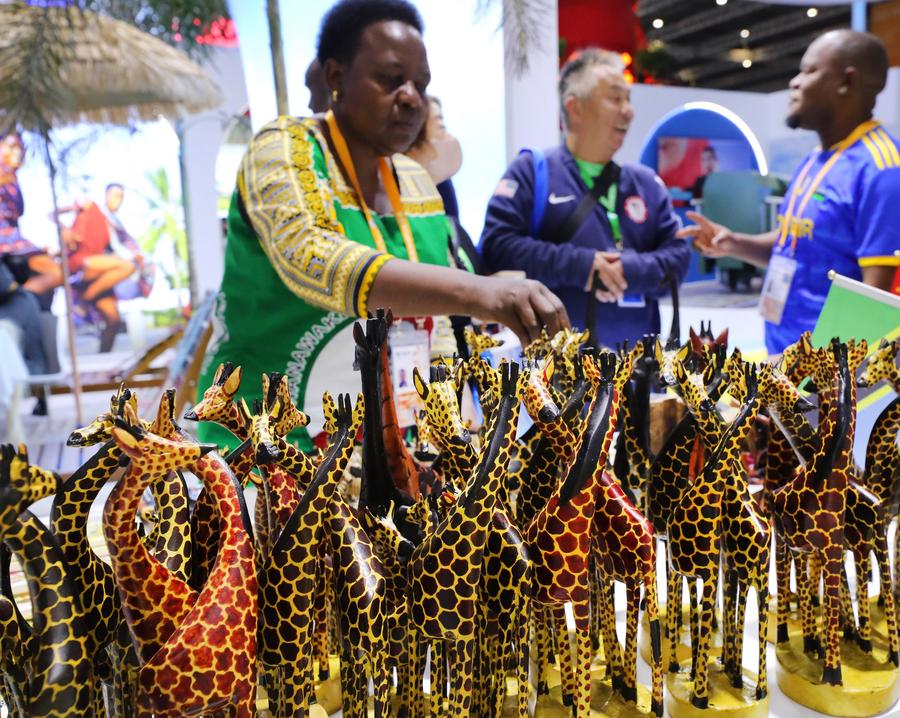From Kilns to Commerce

Changsha has played a pioneering role in reshaping cross-continental trade and cooperation.
From the 50,000 pieces of Changsha Kiln ceramics recovered from the Tang Dynasty shipwreck “Black Stone” to today’s weekly cargo flights between China and Africa, Changsha’s trade with the African continent has spanned over a thousand years. This historic cultural city is playing an increasingly vital role in China-Africa economic and trade cooperation, with a spirit of innovation and openness.
History has borne witness to this cross-temporal friendship. Over a millennium ago, Changsha Kiln ceramics were already being exported to the African continent via the Maritime Silk Road. In 1982, Changsha forged a sister-city relationship with Brazzaville, the capital of the Republic of the Congo, becoming a pioneer in China-Africa city-level diplomacy. Today, as the permanent host of the China-Africa Economic and Trade Expo (CAETE) and the core city of the Pilot Zone for In-Depth China-Africa Economic and Trade Cooperation, Changsha continues to deepen its economic ties with Africa.
Innovative approach
In recent years, Changsha’s trade with Africa has experienced rapid growth, now covering nearly all African countries and regions. Data from the Changsha Customs Authority show that Hunan’s trade volume with African nations has exceeded 50 billion yuan ($6.8 billion) for three consecutive years, ranking first among all central and western provinces in China. In 2024 alone, Hunan’s trade volume with Africa reached 54.85 billion yuan ($7.5 billion), maintaining its leading position. From 2021 to 2024, Hunan’s trade with Africa maintained an impressive average annual growth rate of 14.3 percent. In the first two months of this year, Hunan’s imports of agricultural products from Africa surged by 32.5 percent year on year, totalling 80 million yuan ($11 million).
Behind these promising figures lies Changsha’s innovative approach to advancing China-Africa trade ties.
One standout initiative is a pre-assessment system for African foodstuffs exported to China, pioneered by the Changsha Customs Authority and officially filed with the General Administration of Customs in March. Serving the needs of national platforms such as the Pilot Zone for In-Depth China-Africa Economic and Trade Cooperation, the system allows for early risk assessment of African foodstuffs that companies intend to import but which have not yet been granted market access in China. Based on the results, simplified entry assessment procedures will be proposed to the authorities to streamline the approval process. This will significantly enhance efficiency, establishing a “green channel” for African food exports to China.

The system is tailored to the unique features of African food safety management and includes a comprehensive database featuring food safety standards, pre-assessment technologies, and risk archives. This data-driven approach provides strong technical support for market access evaluations. The initiative will improve both the quality and speed of market access evaluations for African foods, further facilitating a smooth import pathway. The Changsha Customs Authority has pledged to continue supporting enterprises in the Hunan Free Trade Zone in their import needs and to promote industrial chains around African non-resource products such as coffee, nuts, and meat.
A welcoming market
In recent years, the Chinese market has continued to open to African nations, welcoming a growing list of African agricultural products. Changsha is emerging as a vital gateway for premium African agricultural goods. A series of African specialty products, including dried sea cucumbers from Kenya, lamb from Madagascar, and dried fish bladders from Ugandan wild bass, have made their debut in China through the city. Changsha also facilitated the first re-export trade of Kenyan fresh flowers to Uzbekistan, further expanding Africa’s global reach through China.
The CAETE has been successfully held three times, with its permanent exhibition hall now representing all 53 African countries. Through various supporting initiatives, such as the African Product Brand project, the expo has helped to introduce distinctive agricultural products into the Chinese market.
During the 2024 Beijing Summit of the Forum on China-Africa Cooperation, China signed multiple agreements granting market access to African agricultural goods, including fresh avocados from Zimbabwe, soybeans from Zambia, and beef and lamb from Namibia.
Li Guoxiang, a researcher at the Chinese Academy of Social Sciences, noted that the deepening of agricultural trade between China and Africa not only enriches dining options for Chinese consumers, but also helps African farmers to find new markets, raise incomes, and create more employment opportunities across the continent. “It’s a win-win model,” Li said. “It puts food on the table for Chinese families – and money in the pockets of African farmers.”
As preparations begin for the fourth CAETE, Changsha’s cooperation with Africa is poised to reach new heights. Through its ongoing efforts to remove trade barriers and broaden cooperation, the city continues to inject new momentum into building a China-Africa community with a shared future.
 Facebook
Facebook
 Twitter
Twitter
 Linkedin
Linkedin
 Google +
Google +










